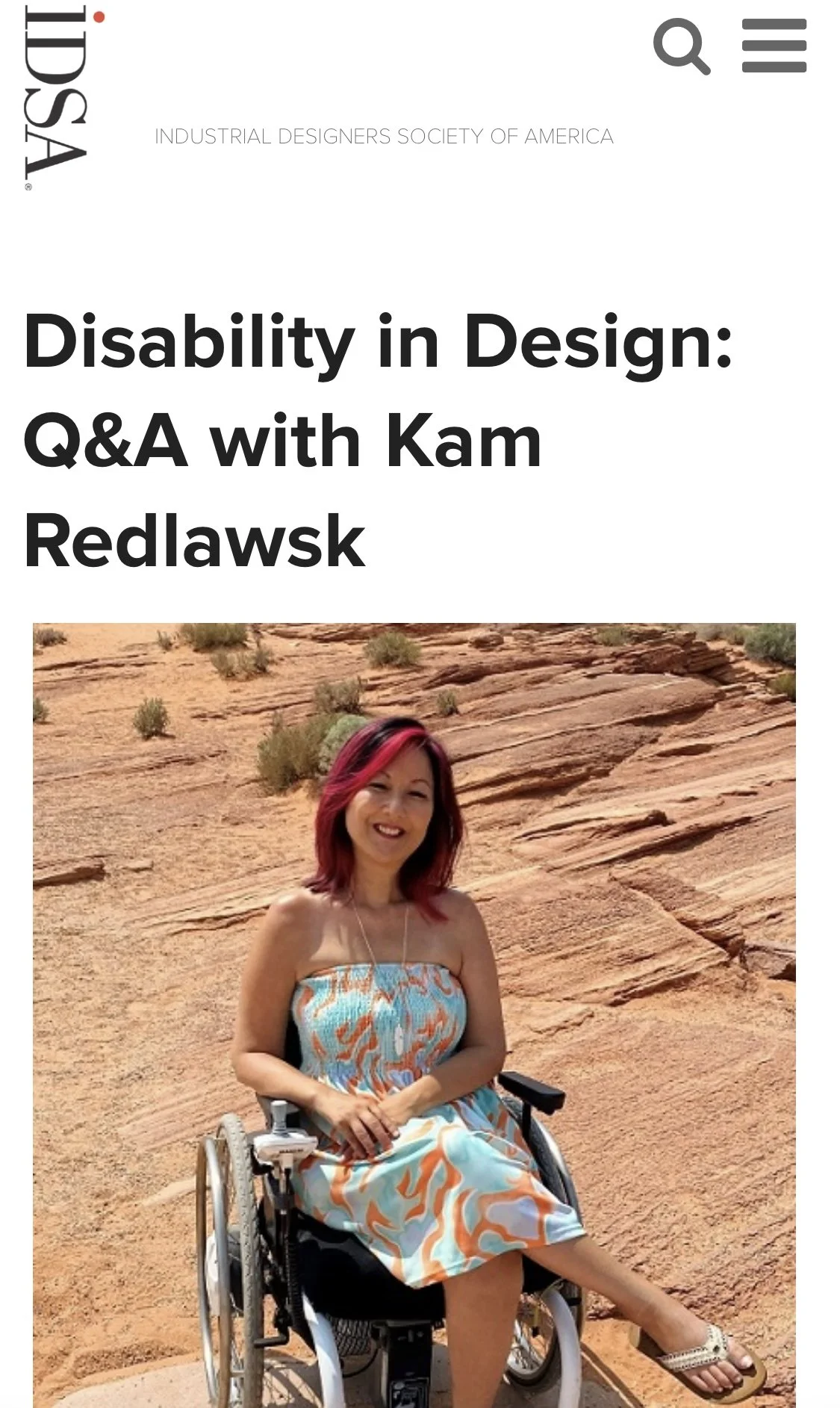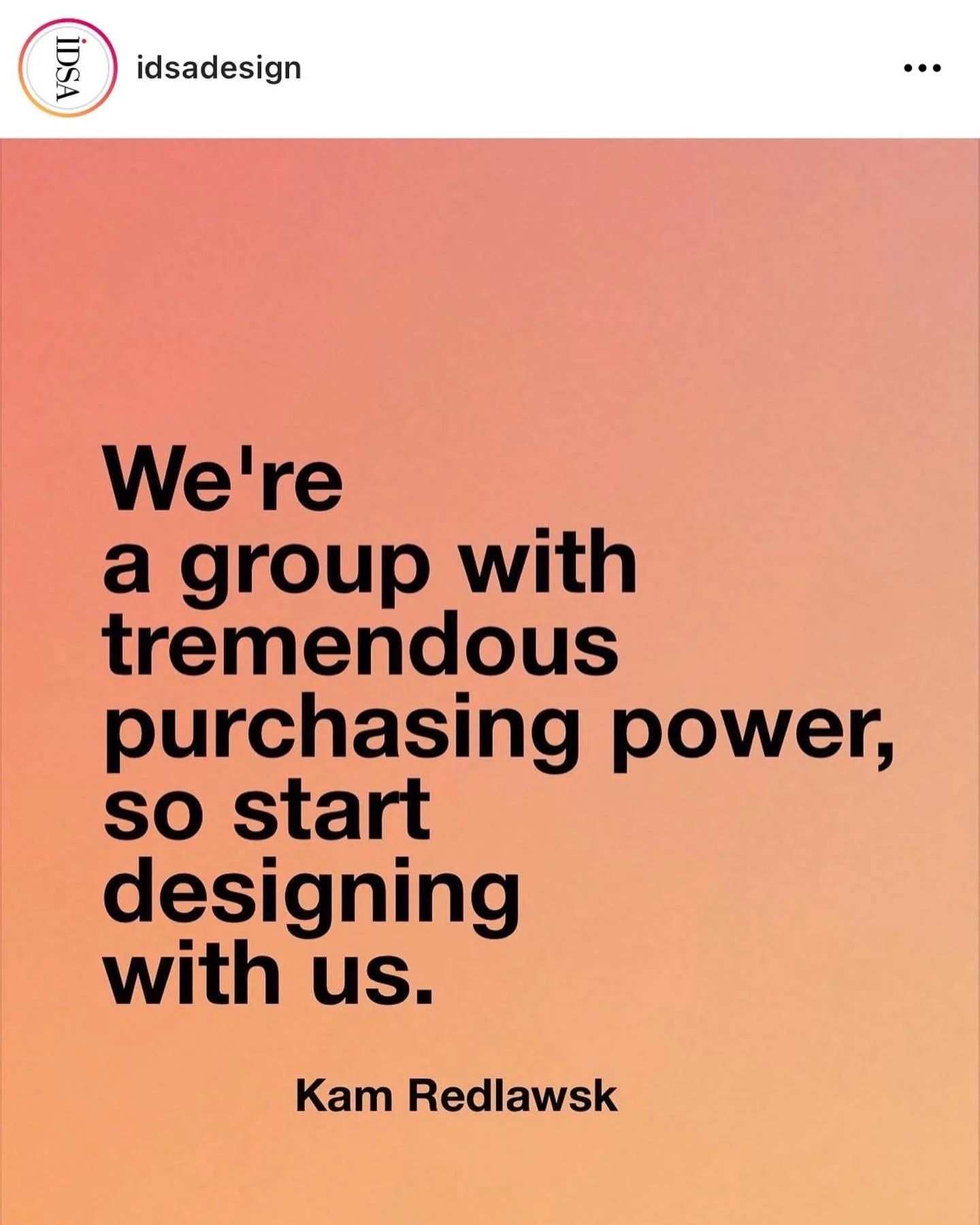Speaking of universal design, read my recent Industrial Designers Society of America - IDSA interview, “Disability in Design: Q&A with Kam Redlawsk” sharing how I got into industrial design, what it means to me and its potential.
I’ve been in communication with IDSA, sharing the importance of raising awareness of universal (accessible) design and disability in the design, work + academic world. There are exciting conversations happening with formation of public events discussing disability and design in an attempt to spotlight this undervalued side, as well as motions to create the first disabled IDSA chapter.
As a disabled industrial designer, it’s shocking (and yet not) how little disabled are thought of in design. I want to help change this and raise the consciousness that universal design is innovative design, while expanding the imagination of what design is and could be.
I’ve shared with IDSA leads that this conversation isn’t just about inclusivity and representation (and the ethics of including disabled rather than continuing the narrative that we are worthless just because a body part or mind doesn’t “work” like the average). This can be a bandwagon that companies and industries jump on without truly understanding. It’s about inclusion, sure. But it’s also about fragmenting our thinking—changing collective thought and realizing the lack of including different minds and experiences restrict the possibilities of greater innovation in products and experience. It’s about understanding human centered capitalism can also be a profitable business model, and companies who are brave enough have the power to shape (not exploit) social awareness (they did so by telling society disabled people were too unacceptable to represent.
While I’m a trained industrial designer, disabled are natural designers due to daily creative adaptation required to live in a world unwelcoming of us. Our (disabled) minds are programmed differently, and I’ve learned so much about product interaction through being disabled (more than I ever could in school) and this difference can catapult industries.
Many innovative mainstream designs or convenience lifestyles were designed for disabled first. Like texting. Texting was initially developed for the deaf community, now we can’t live without it. This is universal design: design that’s not only accessible to all but innovative. Before realizing its (texting) value the general public snubbed their noses because it came from the deaf community; holding the assumption anything related to disability can’t be meaningful or accessible to all.
Design unnecessarily segregates the two worlds of non disabled and disabled. For example, most places don’t need stairs. This isn’t more evident when I see sidewalks or malls with segregated paths where one side may have two steps (for non disabled) and right next to it is a pavement or floor incline (for disabled). Those stairs are completely unnecessary because the non disabled can walk the incline. That’s universal. Today, I see all sorts of new innovative architecture involving stair-less interaction with beautiful design systems, proving it’s possible to have both.
When humans first took a rock and sharpened it to fit their physical needs, this was humans adapting to their surroundings. These primitive humans weren’t considered “disabled” because they needed assistance. ALL design is adaptive design, the industry has merely partitioned which groups it deems as valuable enough to design for. Creativity is adaptation and adaptation is creativity. To me design is potential; an outcome derived from (human) need, wants and culture. Adaptation is a by-product of survival but as more evolved beings design can be and do so much more.
Historically, society (and design) views disabled as “the other”. We’re a “burden”, a sad fringe group they don’t want to design for, forced to design for or a government mandate. Omit this thinking that anything coming from disability is inferior and instead begin wondering about the untapped potential of one of the most marginalized identity groups yet the largest and fastest growing group worldwide. #KamsWheelsTravel #GlobalAccessibilityAwarenessDay
Follow my wheelchair travels, mini memoirs and art @ Instagram.com/kamredlawsk



